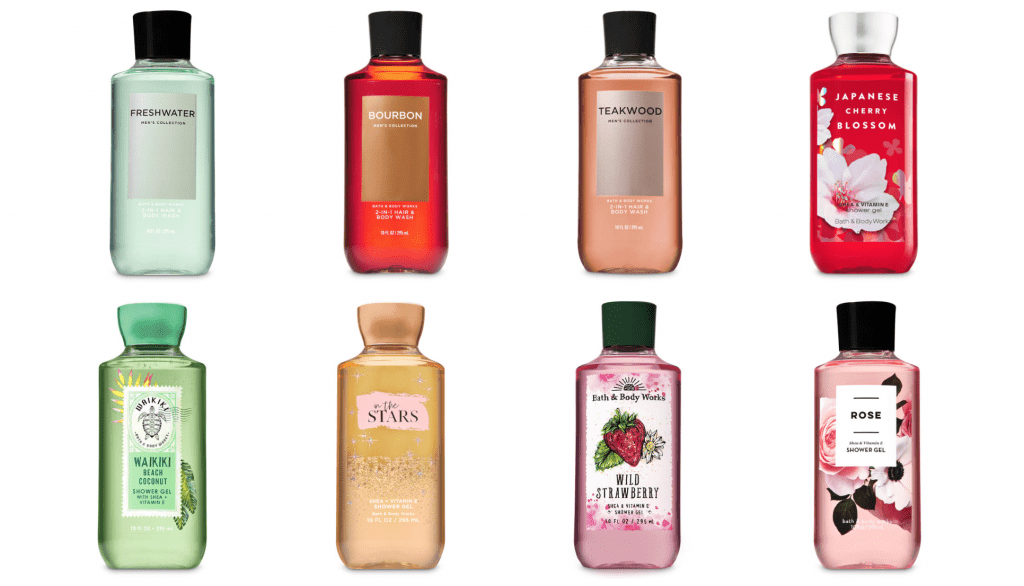Staple mall brands have been getting killed off with some regularity in recent years, as consumers opt for e-commerce purchases and foot-traffic has plummeted as a result, but Bath & Body Works is far from dead. In fact, “Women are still hurling cash at a company that sells spiced gingerbread body wash and donut-scented hand soap,” according to Money.com. One need not look further than the May 2019 first-quarter revenue report from parent company L Brands, which revealed that while Victoria’s Secret’s same-store sales continue to plummet, Bath & Body Works is thriving: its first quarter same-store sales were up 13 percent compared to last year. Victoria’s Secret’s sales were down by 5 percent.
L Brands’ struggling lingerie giant brings in the bulk of the revenue – $1.5 billion for the quarter ending May 4 – versus the comparatively smaller Bath & Body Works’ $870 million in sales. The latter – which makes home fragrance, gifts, body, and bath products and sells them largely by way of brick-and-mortar outposts across the U.S., maintaining more than 1,600 stores despite the larger existential crisis amongst similarly situated companies (i.e., traditional mall brands) – is garnering a lot of attention.
Chief Financial Officer Stuart Burgdoerfer said last month that L Brands’ favorable quarterly results were “principally driven by a strong performance at Bath & Body Works and some favorability in income taxes.” And analysts are paying attention to what is routinely being viewed as “exceptional” growth by Bath & Body works. Wells Fargo Senior Analyst Ike Boruchow, for one, recently characterized “the strength of [the Bath & Body Works] business,” as among “the brightest spots in retail today.” Cowen analyst Oliver Chen pointed to “signs of healthy growth” for the 28-year old brand, which he expects to continue.
As for what is driving consumers into Bath & Body Works’ stores to snap up $18 Peach Bellini candles and $12 Cherry Blossom body wash, Money.com’s Kristen Bahler says it has something to do with the stores themselves – and how great they smell. “Scent is an important, emotional thing for consumers,” Larissa Jensen, beauty business analyst at NPD Group, told Money. “It’s personal. It brings back memories.“
That reminiscence, particularly for millennial consumers, is powerful. In the same way that high fashion brands are driving home – and banking on – a budding ecosystem of all things throwback, as helped by the many, many archive-centric Instagram accounts and a larger sense of retro fashion, “Bath & Body Works brings out our sentimental side. We’re hardwired to gravitate to the scents that remind us of our childhood,” Jensen says. “And what’s more nostalgic than a whiff of cucumber melon hand lotion? Or juniper breeze body spray?”
This sense of nostalgia (paired with heavy-duty influencer marketing) is helping Dior to sell its 90’s “it” Saddle bags, and putting Cher Horowitz yellow plaids, and retro logos, such as those of Fila, which recently collaborated with Italian design house Fendi, and Champion back on the runways and in the closets of consumers.
The same can be said of Bath & Body Works, and its truly throw-back products.











